Is Fiberglass Flammable? Only at Extreme Temps
Author: Omar Alonso | Editor: Omar Alonso
Review & Research: Jen Worst & Chris Miller
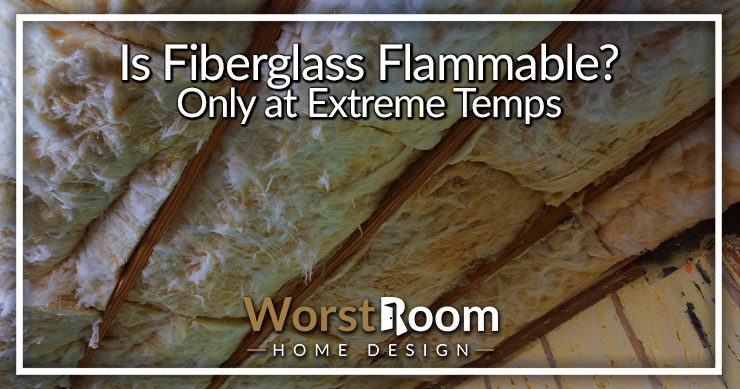
Are you insulating your home's finished garage, attic, or extension? Why not go with fiberglass insulation for the job? When choosing insulation, you need a product with a high "R" value. Flammability is a big concern when picking insulation, and no homeowners want materials presenting a fire hazard in their homes. So, is fiberglass flammable?
Is fiberglass the right insulation choice for your home? The good news is that fiberglass insulation isn't flammable but can melt when exposed to high temperatures. The issue is that installing this material requires specialized tools and proven methods.
Like everything involved in home construction and renovations, it's a grey area. This post gives you everything you need to know about common types of fiberglass insulation and whether it's the right insulator for your project.
How Do Manufacturers Make Fiberglass Insulation?
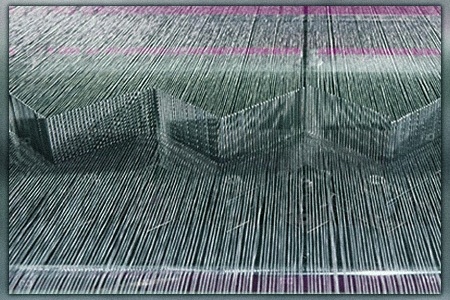
Manufacturers use silica sand mixed with soda ash and limestone to make fiberglass. The sand creates the glass, while the soda ash and limestone lower the temperatures required to melt it in manufacturing. They add magnesite, feldspar, and kaolin clay to the material to improve performance.
After mixing the batch, they heat the materials to temperatures of 2,500 °F, which is hotter than the temperatures used to manufacture sand glass. After completing the molting process, the resulting product can easily form into filaments, glass wool, or fibers.
Fiberglass products require additional coatings, including the use of lubricants to reduce their abrasive qualities. The manufacturer also adds an anti-static agent before forming, packaging, and shipping the material.
Besides its use as an insulating agent in construction projects, fiberglass has several industry applications in the home. Some household products incorporating the use of fiberglass include bathtubs, showers, windows, and roofing materials.
Is Fiberglass Insulation Flammable?
Is fiberglass flammable? Since fiberglass insulation incorporates glass in manufacturing, it's a non-flammable material that won't catch on fire when exposed to extreme heat and open flames. However, fiberglass insulation comes with a paper and/or foil backing, and that's a flammable material.
Is fiberglass fireproof? Manufacturers typically add flame-retardant foils and adhesives to paper backings. For instance, it's common for manufacturers to use FSK shields to form a vapor shield and reduce fire risk. The flames take longer to spread when installing FSK-shielded fiberglass insulation with its foil side exposed.
Melting Fiberglass Insulation Can Cause Issues
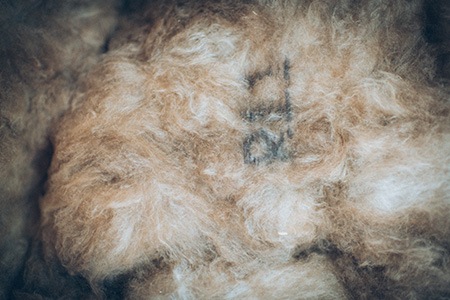
While fiberglass insulation doesn't burn, it can melt if exposed to high temperatures. Fiberglass insulation has a heat rating of 1,000 °F, meaning it can withstand exposure to these elevated temperatures before it starts to melt.
There are several other insulation materials with higher melt points. Vermiculite melts at 1,400 °F, and ceramic fiber and mineral wool melt at 2,200 °F. So, why is that important? Essentially, if chimney fires reach temperatures beyond 1,700 °F, there's a chance the fiberglass insulation will start melting.
Melting fiberglass insulation can cause several dangerous problems. For instance, fiberglass can transfer heat to other flammable materials that are set on fire. For this reason, the International Residency Fire Code requires homebuilders to create a 1" to 2" space around all chimney vents.
This requirement is for gas fireplaces and furnaces, and the code also stipulates the homebuilder use a type B chimney vent. Type B vents feature two tubes, with the exterior one not touching the interior one to create a heat barrier.
Burning Fiberglass Increases the Available Oxygen in the Room
As the fiberglass insulation melts, it releases oxygen trapped in the material. As a result of the oxygen gassing off from the insulation material, it turns the area into a convection chamber. So, essentially, melting fiberglass insulation speeds up the spreading of a fire.
There are several fire demonstrations illustrating this effect. Structures featuring fiberglass insulation see the ceiling collapse within 20 minutes of the fire breaking out. The entire building is burned to the ground two hours later. Is fiberglass flammable? In these situations, of course.
In a similar experiment, the other insulation materials we mentioned (vermiculite and mineral wool) last longer. The flame spread is an important fire safety measure. When fires start, the speed at which they travel is an important metric for assessing the severity of the situation. The slower the fire spreads, the more time emergency services have to extinguish it.
What Insulators Perform Better Than Fiberglass?
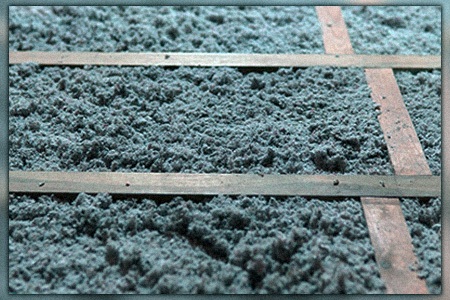
Cellulose is a great option if you're looking for a more effective insulator. Manufacturers use recycled newspapers to create this material. They shred the newspaper into strips and add boric acid as a flame retardant.
Boric acid also helps prevent mold from accumulating on the insulation, preventing pests from nesting and preventing wood rot. The final stage of the cellulose manufacturing process is to run the material through a "fiberized" process, where it comes out with a fluffy appearance and texture. The manufacturer also adds more boric acid during this manufacturing stage.
Some industry sources state cellulose is an unsafe material to use in residential insulation applications. However, this fearmongering is just to scare people away from using the material, and usually funded by fiberglass and ceramic or mineral wool insulation manufacturers.
Cellulose Doesn't Feature Large Air Pockets
The issue with fiberglass is its air pockets, but the denser nature of cellulose insulation does away with these air pockets. So, fires starting in areas insulated with cellulose will spread slower than those featuring fiberglass insulation.
Cellulose Burns Slower Than Other Insulation
In the experiment where melting fiberglass insulation led to the roof collapsing in 20 minutes, it took cellulose 70 minutes to achieve the same fate. The house took three hours to burn to the ground instead of two hours for the home using fiberglass insulation.
Cellulose Has Superior Insulating Properties
Cellulose has superior insulating properties along with improved heat resistance over fiberglass insulation. The University of Colorado conducted a study where cellulose insulation lost less heat in residential installation compared to its fiberglass counterpart.
Buildings insulated with cellulose are 36% to 38% tighter than the fiberglass-insulated home. Three weeks after starting the experiment, the cellulose home retained 26.4% more heat than the fiberglass-insulated property.
Cellulose also offers improved insulation for homes at lower temperatures. Fiberglass insulation starts to lose its "R" value as the temperature declines. The larger air pockets in the fiberglass insulation are responsible for the reduction in insulating capacity.
So, using fiberglass insulation over cellulose in colder climates could see your home lose up to half of its R-value. As a result, you'll need to use more energy to keep your home warm, increasing your gas or electric bill.
Disadvantages of Using Cellulose Insulation
So, if cellulose has better insulative properties than fiberglass and is less of a fire risk, why don't homebuilders use it more frequently in construction projects? And does fiberglass insulation burn? At the end of the day, it boils down to ease of installation and costs associated with its use.
Fiberglass insulation is around half the price of cellulose. You're paying approximately $1.76 to $3.20 per square foot with cellulose insulation, whereas fiberglass insulation costs $0.88 to $1.64 per square foot.
The ease of installation surrounding fiberglass insulation reduces labor costs, driving down the final production expenses of homes. As a result, you'll pay about double the labor cost for installing cellulose as you will with fiberglass insulation. These costs add up tremendously throughout the build.
The final disadvantage of using cellulose over fiberglass insulation is that cellulose requires blown-in fitment, requiring specialized equipment for the task. Is fiberglass flammable? Yes, but the benefits are still greater than alternatives, considering it won't burn until extreme temperatures are encountered.
FAQs Regarding Fireproof Fiberglass
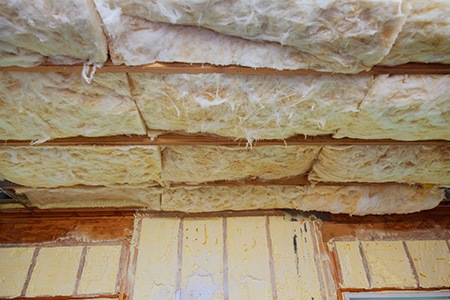
We’ve been asking and answering questions like “does fiberglass burn” and “is fiberglass insulation flammabale”, but undoubtedly plenty of other questions are arising in your mind. Let’s cover the most common questions now.
How Fireproof Is Fiberglass Insulation?
Fiberglass insulation features a manufacturing process involving the spinning of fibers combined with polymers making it naturally fire-resistant. However, while fiberglass insulation is naturally fire-retardant, the paper and foil batts used in manufacturing are highly flammable.
Is Fiberglass Dust Flammable?
If enough fiberglass dust accumulates in the space, the premises may experience a fire or dust explosion. The United States saw 175 dust fires and 37 dust explosions in 2022 alone. Therefore, manufacturers must implement proper control measures to prevent dust accumulation in facilities.
Is Fiberglass Resin Flammable?
The heat generated during the mixing and curing of fiberglass can result in the gassing-off of flammable vapors from the material. Therefore, manufacturers of fiberglass insulation must ensure no ignition source is present during the manufacturing process. They also have to take extreme care when disposing of resin to avoid fire risk.
What Does it Cost to Install Fiberglass Insulation?
The average cost of installing fiberglass insulation in residential projects is approximately $0.88 to $1.64 per square foot. So, homeowners can expect to pay $300 to $600 to insulate a 500-square-foot residence, including the labor cost.
Key Takeaways Regarding Fiberglass & Burning
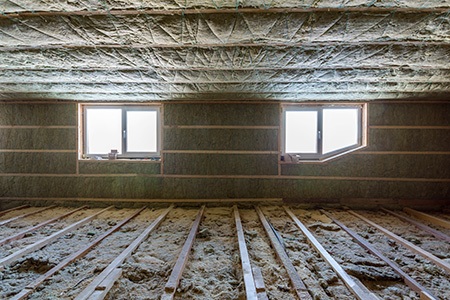
- Fiberglass insulation is a heat and fire-resistant material.
- However, the paper and foil batts used in the material are highly flammable.
- Fiberglass insulation can melt under extreme temperatures above 1,700 °F, releasing trapped oxygen in the material.
- The release of oxygen to a raging fire accelerates the burn.
- Cellulose insulation doesn't have the same accelerant properties as fiberglass.
- Fiberglass insulation has less insulative properties than cellulose insulation.
- Cellulose is a more reliable material for home insulation products but costs more than fiberglass insulation.
So, is Fiberglass Flammable?
Fiberglass is heat-resistant and fire-resistant, but like anything it only resists burning up to certain temperatures. So will fiberglass burn? Yes, at a very extreme temperature it will, but we’re talking about ones so high you won’t encounter them unless something highly catastrophic is happening (not normal accidents). So is insulation flammable? Yes, but not in the normal sense.
It’s made to be fireproof in common cases. It's more likely to melt than burn. So the answer to "is fiberglass flammable" is no, but that's in the sense of normal expectations. If an entire building catches fire than you can expect the fiberglass to melt and burn. But not from the heat of being in an attic, for example, or even a lighter or match being struck and held next to it.



